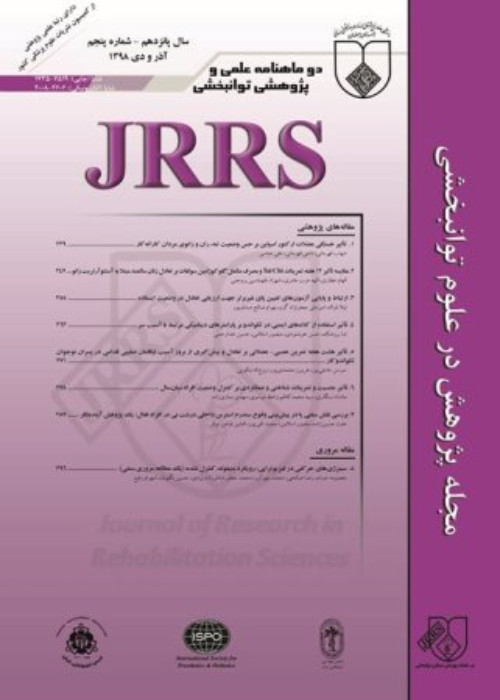The relationship between hypernasality and timing of primary palatal surgery and cleft type in 3-6 years old children with cleft palate
Author(s):
Abstract:
Introduction
There are various types of clefts of the primary and secondary palate and various degrees of severity. Despite the relatively long history of palatal surgery، little consensus has been reached regarding the best surgical techniques، and even less regarding optimal timing. There are still no standard protocols to address the issues of ideal timing for cleft palate repair to attain optimal speech. This study was conducted to examine the frequency of preschoolers with cleft palate who demonstrate hypernasality. The impact of the time of primary palatal surgery and cleft type on moderate to severe hypernasality was also examined. Materials And Methods
A group of 46 preschoolers aged 3-6 years with repaired cleft palate was assessed using Universal Parameters for Reporting Speech Outcomes in Individuals with Cleft Palate – Farsi Edition. Cleft types were bilateral cleft lip and palate (BCLP; n=5، 10/9%)، unilateral cleft lip and palate (UCLP; n=20، 43/6%)، complete cleft palate (CP; n=10، 21/7%)، cleft of the soft palate only (SPO; n=6، 13%) and submucous cleft palate (SubMC; n=5، 10/9%). Judgments of hypernasality were made by a certified speech and language pathologist and were made using a 4-point rating scale. 32 Had a primary palatal surgery prior to 12 months of age، 8 had surgery at 12-18 months of age، and 6 had surgery after 18 months. Results
78/3 percent of the children demonstrate moderate to severe hypernasality. There were no significant differences between 5 groups for hypernasality based on cleft type. The analysis، also، revealed no significant relationship between age of primary palatal surgery and number of children with significant hypernasality. Conclusion
Because of the high amount of hypernasality in all children، the need for research documenting the efficacy of surgeries employed with these children is essential. In this study the age range was wide، and there was the small number of children in each cleft palate group. The Additional research is needed to determine if there are variables that might have masked the influence of timing of primary surgery and cleft type (should be deleted).Language:
Persian
Published:
Journal of Research in Rehabilitation Sciences, Volume:10 Issue: 2, 2014
Pages:
228 to 238
magiran.com/p1317641
دانلود و مطالعه متن این مقاله با یکی از روشهای زیر امکان پذیر است:
اشتراک شخصی
با عضویت و پرداخت آنلاین حق اشتراک یکساله به مبلغ 1,390,000ريال میتوانید 70 عنوان مطلب دانلود کنید!
اشتراک سازمانی
به کتابخانه دانشگاه یا محل کار خود پیشنهاد کنید تا اشتراک سازمانی این پایگاه را برای دسترسی نامحدود همه کاربران به متن مطالب تهیه نمایند!
توجه!
- حق عضویت دریافتی صرف حمایت از نشریات عضو و نگهداری، تکمیل و توسعه مگیران میشود.
- پرداخت حق اشتراک و دانلود مقالات اجازه بازنشر آن در سایر رسانههای چاپی و دیجیتال را به کاربر نمیدهد.
In order to view content subscription is required
Personal subscription
Subscribe magiran.com for 70 € euros via PayPal and download 70 articles during a year.
Organization subscription
Please contact us to subscribe your university or library for unlimited access!



